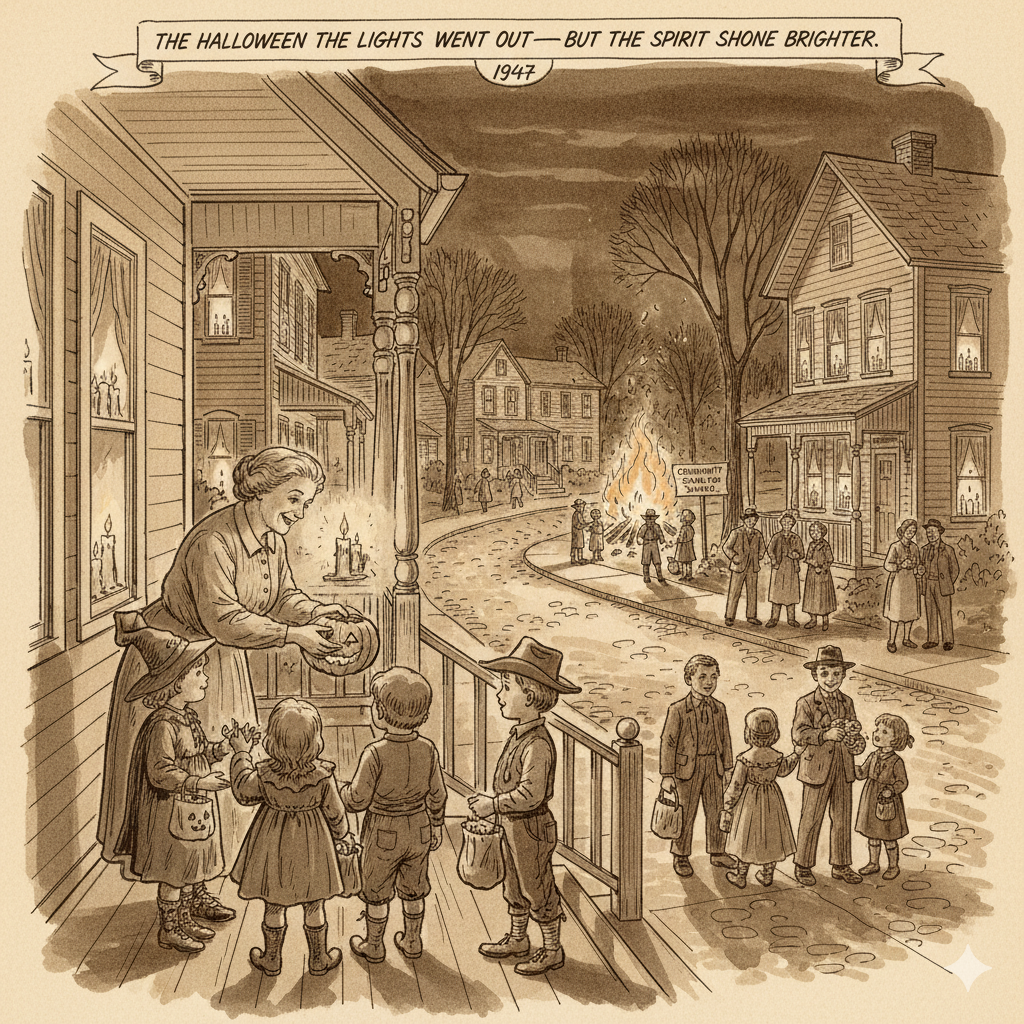5280 Pulse & Perspective
Archives
The Halloween the Lights Went Out—but the City Kept Glowing
SIGN UP FOR OUR NEWSLETTER
The Halloween the Lights Went Out—but the City Kept Glowing |
How a citywide power outage illuminated Denver's spirit of resilience and warmth |
Halloween night, 1947. Across the northeastern United States, children raced door to door in paper costumes and rubber masks, their laughter cutting through the crisp autumn air. But somewhere between twilight and dinnertime, the lights went out. A sudden power-grid failure rippled across entire towns, plunging neighborhoods into darkness.
For a few quiet minutes, the world stood still. Radios went silent. Porch lights—those simple beacons that marked every “Trick or Treat”—blinked away. Parents called out for their children, thinking the night was over. And then, something remarkable happened.
People adapted.
Families lit candles in windows, setting milk jugs on porches to hold flickering lanterns. Firefighters hauled spare fuel to parks, lighting community bonfires so children could gather safely. Across the Northeast, strangers became neighbors—passing candy by hand, trading ghost stories by the glow of open flames. Newspapers later called it “The Halloween the Lights Went Out—but the Spirit Shone Brighter.” It was a small moment in history, but one that revealed something big: when the lights fail, people don’t.
That same energy runs through Denver. We may not have lived through that blackout, but we know its lesson by heart. This is a city that has always learned to find light in its own way.
When snowstorms shut down roads, neighbors in Wash Park pull out shovels—not just for themselves, but for the house next door. When sudden cold snaps hit, downtown cafés stay open late for anyone who needs warmth. And every October, as the mountains catch that early dusting of white, the Mile High air carries a reminder: it’s not the power lines that keep a city glowing—it’s the people who refuse to dim.
The story of 1947 isn’t nostalgia. It’s instruction. It tells us that community isn’t a luxury—it’s an emergency generator. Whether you’re a teacher keeping kids engaged through a snow delay, a barista offering a free cup on a freezing morning, or a neighbor hanging extra lights to cheer up the block, you’re doing exactly what those families did 78 years ago—making brightness out of whatever you’ve got.
There’s a kind of poetry in that. Denver is a city that celebrates light even when skies are gray. From the lantern parade at the Cherry Creek Arts Festival to the candlelit vigils that mark moments of hope and remembrance, we’ve turned illumination into a local language.
So as porch pumpkins glow this Halloween, and kids layer their costumes over winter jackets, maybe take a second look at that flickering candle or string of orange bulbs. It’s not just decoration—it’s tradition. It’s history, carried forward through action.
The families of 1947 taught America something timeless: the grid may fail, but human connection never does.
And here in Denver, that lesson feels like second nature. We’ve always known how to keep the light alive. |

